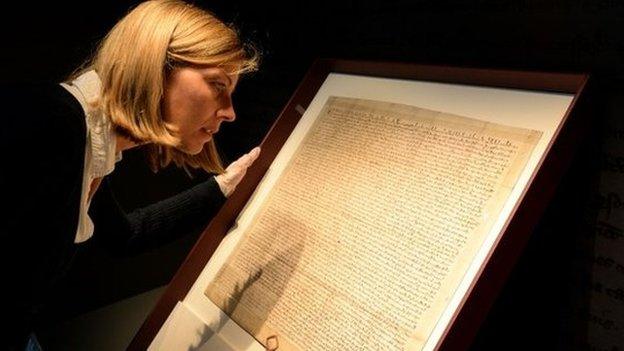Magna Carta: Runnymede, the meadow where history was made
- Published
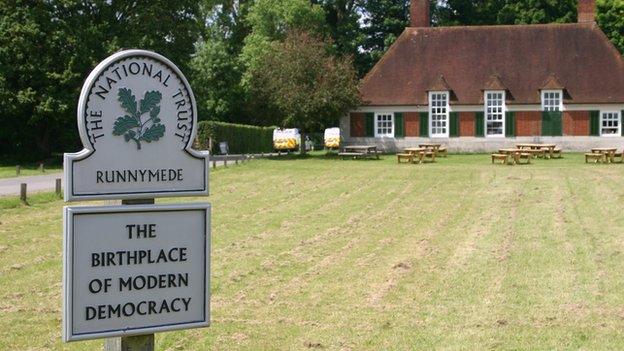
Many people are surprised when they get to Runnymede and find it is, essentially, a field
The eyes of the world will be on Runnymede this week as the 800th anniversary of Magna Carta is celebrated. But should you visit the birthplace of modern democracy, what exactly will you find?
In 1215, Magna Carta simply described Runnymede as a meadow between Windsor and Staines.
Eight centuries on, not much has changed. The meadow is still there, along with a hill, some trees and the River Thames. More recent additions include some cottages and a boatyard. Oh, and a National Trust tea room.
Look for Runnymede on a map and you won't find a town or even a village, just a field dotted with memorials, external, testament to the site's historical significance.
Today, some question the importance of Magna Carta, arguing that much of it is now irrelevant and only three clauses are still valid.
But, problematic though this peace treaty was, it went on to influence key declarations of human rights and its principles of freedom, democracy and the rule of law still drive continuing protests around the world.
Because of Magna Carta's influence, many people are surprised that Runnymede has remained, essentially, a field - and one that attracts a lot of dog-walkers.
"If you live there, Runnymede means the place where you walk the dog," confirms Geri Silverstone of the National Trust, which owns the site.
"If you live in London, it's the first place of green you come to. Or if you're a constitutional lawyer from Illinois, it's the birthplace of constitutional democracy."
The challenge for the National Trust is how to present a story that covers all those aspects, and Mr Silverstone admits it is tricky.
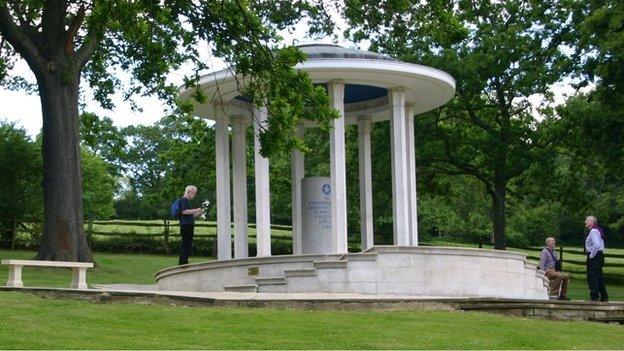
The memorial was put up by the American Bar Association
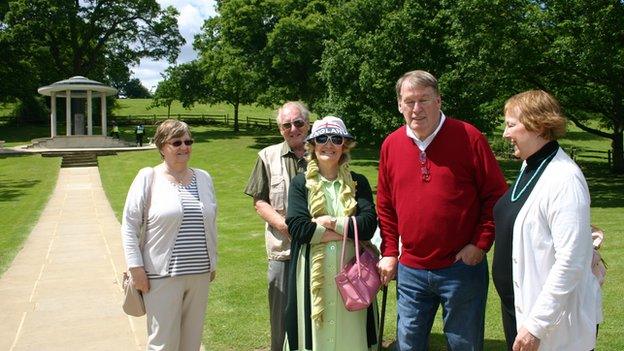
Some visitors are surprised to find an American memorial at Runnymede
Visiting the Magna Carta memorial at the meadow for myself, I expect to find tourists keen to talk about the rule of law, habeas corpus, external, the current Human Rights Act debate, issues of democracy and the rise of Islamic State, and detention without trial at Guantanamo Bay, and I am not wrong.
But I am surprised that nearly everyone I meet is taken aback to find out the memorial is American. I find people talking about the names of US lawyers on the paving stones, and the stars on the ceiling that remind them so much of the US flag.
So why the trans-Atlantic influence? As any American knows, the founding fathers turned to Magna Carta for inspiration and guidance when they drew up the US constitution, and so they celebrate the Runnymede parchment.
Perhaps the English are slightly too reticent about Magna Carta's importance?

Magna Carta
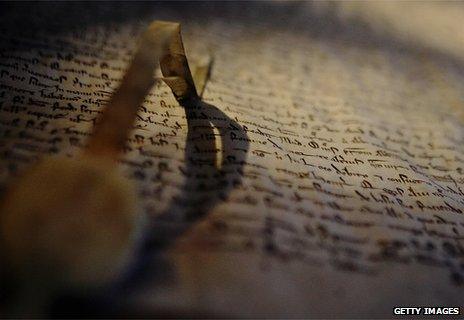
Magna Carta originated in 1215 as a peace treaty between King John and a group of rebellious barons
The original document was written in Latin on parchment made from animal skin
The name didn't emerge until the document's re-issue in 1217. It became known as 'The Great Charter' to differentiate it from the smaller 'Charter of the Forest' issued at the same time

Jean Gothard, from North Yorkshire, says: "This is beautiful England and it's all American. We would have done it in a more natural way."
Quizzed further, she explains: "We don't get emotional in England. We just don't show it."
But she believes that beneath the surface, English patriotism is still strong, and agrees recent war anniversaries might even have led to a growing interest in Magna Carta and what our history means.
"Look at the VE Day concert on the BBC," she says.
"The English don't wave flags. Then suddenly they come over all patriotic."
Do locals believe there is a problem in explaining Runnymede to visitors?


Runnymede is on the banks of the Thames between Windsor and Staines
Dawn over Runnymede
I got to know Runnymede meadow as a student at nearby Royal Holloway.
It was a good place to watch the sun rise, although dawn over Runnymede was often a bit cloudy and accompanied by the roar of planes from Heathrow.
Someone would always make the predictable comment: "Magna Carta was signed here, you know." The answer would be "Oh, right." We didn't even work out it was sealed, not signed.
We just weren't there as tourists; we were there to enjoy the countryside, the River Thames and a beautiful part of Surrey.
And I have a private theory that sometimes it takes an American to explain what Magna Carta really means to the world.
BBC iWonder - Why do Americans think Magna Carta is so awesome?

Lynne Bates used to live by the river at Runnymede until the Thames burst its banks and she and her husband were flooded out.
She says she frequently "rescues" lost tourists searching for a piece of history and believes people are often looking for something that isn't there.
"They go looking for the memorials and it's a bit of a trek and they go towards the fields and they get lost," she says.
"You have to tell them we don't really know where Magna Carta was sealed. There's nothing 100% in history to say we know that place."
She says she has a long-held secret wish that while walking her dog on the meadow, she might one day discover something from King John's time proving what happened there.
Wendy Locker, secretary of Englefield Green Residents Association, believes giving a field a name might have given the wrong impression.
As for that name, it's said to date back to Saxon times - much earlier than Magna Carta. Runnymede is thought to take its name, external from "runieg" meaning regular meeting, and "mead" meaning meadow.
"The confusing thing is Americans come over and they think 'Where is this place called Runnymede?' and actually it's not a town," she says.
"Runnymede is all the meadows next to the Thames. It's hard for people and you need a good map."

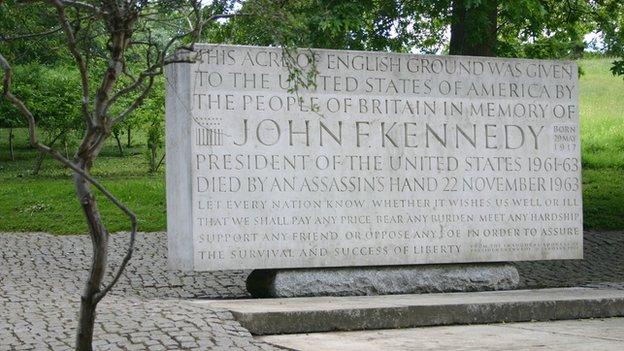
The Kennedy Memorial stands on a symbolic acre of soil donated to the US
Visiting the meadow
If you visit the Magna Carta memorial, what practicalities should you bear in mind?
First of all, if you're driving, make sure you have enough change for the car park. The National Trust tea room is tiny, and probably won't have enough change. There isn't a shop. As an attraction, Runnymede is just not that commercial.
Remember, it's just a field - although not just any field. Some say the landscape remains more or less unchanged since King John's days.
Don't be surprised if you meet Americans making something of a pilgrimage, and that the United States were the only ones who managed to erect a memorial to the document that means so much to them. Incidentally, the Kennedy Memorial is close by on land donated to the US - an acre of symbolic soil.

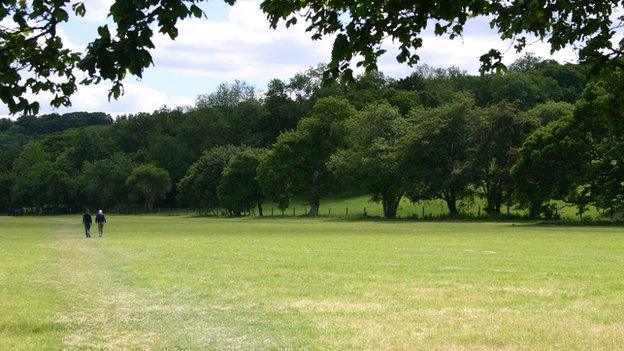
The meadow has been known as a meeting place since Saxon times, historians say
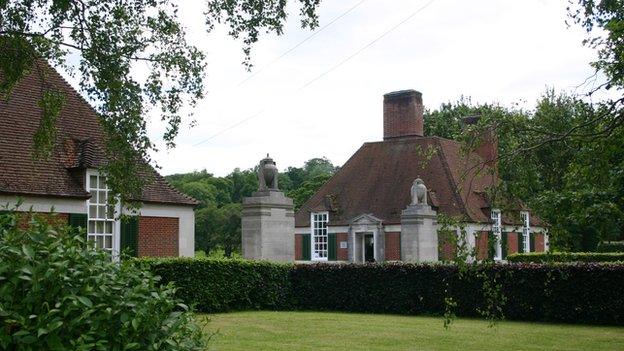
The memorials are signposted from the tea room
- Published2 February 2015
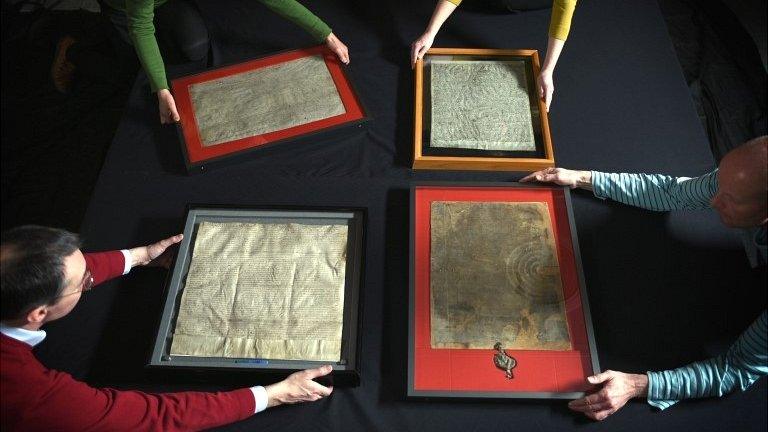
- Published19 January 2015
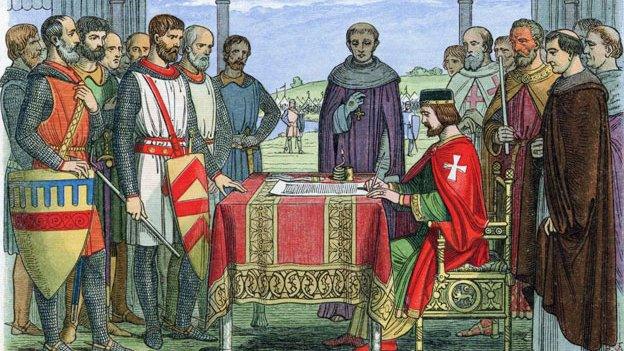
- Published1 January 2015
.jpg)
- Published12 September 2014
